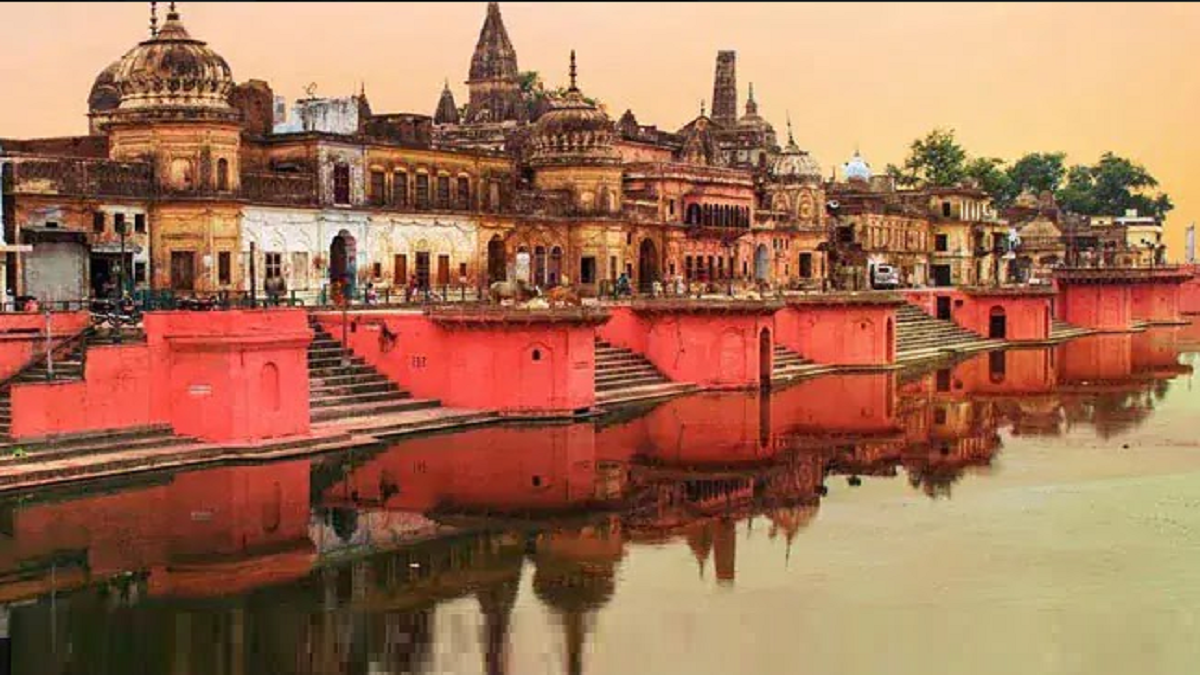


While the building of the mammoth temple at the Ram Janambhoomi in Ayodhya has garnered all attention. The attempt is to revive the ‘Ram Nagari’ in totality and not just confine it to a temple.
Scriptures say that it was Raja Ram who turned Ayodhya from a mere administrative centre of the kingdom to a vibrant capital city, an urban hub. “Maryada Purushottam Shri Ram was very well aware of the elements of life— the Panch Mahabhoot. To keep the city in a live condition and for life to exuberate in its full potential, he designed the space for all 108 elements which contributed to the making of the Panch Mahabhoot (five elements — earth, water, fire, air, and space). And this was done by making a space for 108 Jalashay (waterbodies) well within the city limits to create water sovereignty for the whole city,” says Mahant Pawan Kumar Das Shastri.
Following the apex court judgement and resumption of the work at the temple site, it was felt that Lord Ram cannot be welcomed in an ecologically degraded city. Thus, Ayodhya Development Authority and Ayodhya Nagar Nigam together envisaged a move for the government-citizen partnership to revive and rejuvenate the city ecologically.
The outcome of this initiative is Jal Dhar, the attempt to identify and resurrect water bodies in and around Ayodhya, the lifeline of Ram Rajya. Expertise for executing the project came from a reputed NGO, Community Friendly Movement (CFM), which is credited with creating/reviving many water bodies in the country’s most arid district, Jhabua, in Madhya Pradesh. Challenge in Ayodhya was, however, different. The area was not arid, rather riverine and it had a network of water bodies, which had got encroached upon over a period of time thus leaving a trail of polluted ponds and frequent urban floods.
A painstaking study of land records, done by a group of local citizens under the leadership Acharya Ram Prakash Pandey, gave an estimate that 108 ponds existed in Lord Rama’s city, many of which had practically vanished and others were in a state of absolute distress. These natural water bodies that are the charging points of the aquifer system ensuring water ecological balance were in deep stress and needed urgent attention.
Water hyacinth covered lake surface, drains released in ponds, making them a breeding ground for mosquitoes, waterborne disease, and floating non-biodegradable waste. Last December, it was decided that the revival of these ponds was to be made part of the citizen’s initiative, duly supported by the government agencies by the way of in-situ rejuvenation.
The 108 water bodies of Ayodhya were geotagged through the campaign #KahanHaiMeraTalab and #AaoBachaLePaani on social media including Facebook, Twitter, and LinkedIn. Ayodhya residents came out in full support and in a matter of one week, all the ponds (locally called Kunds) were identified along with their cornerstones. It was stressed to the citizens that from the Vedic times, humans lived in harmony with nature but the degradation of human values led to erosion of natural resources. The campaign was to start course correction and regain natural wealth.
The first such initiative was taken at Lal Digghi Talab, which is located in the upmarket Civil Lines area. One of the city’s main drains fell in this pond. The filth in water choked aquifers, which did not allow water to seep into earth, making it stagnant and a source of urban floods during the rainy season. To overcome the problem, a pump house had been installed to drain out the water and pump it into the main sewer line. In December last year, the municipal bodies in collaboration with CFM started what’s called the Vedic treatment of water. It’s an integrated process that involves the treatment of water using Ayurvedic ark (plant extracts) specially prepared and customized as per the need of the specific water body.
“The process of treatment involved installation of a freshwater tank to dilute the ark (concentrate) created specifically for the water body and releasing it in the pond before sunrise. The whole process requires a very small electrical charge to resuscitate the water ecology and induce aerobic reaction leading to the increased dissolved oxygen level in the water. Once the process is initiated, the viscosity of water improves and the clogged aquifers start to open,” says Saurav Ghosh, of CFM.
“As the city prepares for the onset of Monsoon, the process of removing encroachment and preparation to catch the rain where it drops, and when it drops, is going on in full swing in Ayodhya,” says Vishal Singh, Municipal Commissioner and Vice Chairman, Ayodhya Development Authority. “Having encouraged people with Vedic inspirations, it was decided to use the Vedic sciences to clean the ponds, which yielded great results,” adds Singh.
After just a month of treatment, the natural aquifers became functional and started recharging the water table. Since the water had started to seep into the earth, there was no overflow making the pump house redundant. The work is now set to begin on the other water bodies.
However, it is not to be a one-time affair but the initiative is to create structures for the sustainability of these water bodies, and here comes the concept of connecting the 108 Kunds to 108 Agnihotra or Yajna Kund. Thereafter appoint a scholar as caretaker, who additionally would be training and helping people in performing Vedic rituals.
This scholar will not only perform yajnas but also ensure the care of Prakriti (nature) in the local ecosystem to ensure operation and management for sustainability of the rejuvenated Kund. By taking care of water, plants, animals, and humans around the Kund, the scholar will be Mool Srota (fundamental connect) to establish the missing link to serve nature. “The management and care of precious water, water reuse and knowledge propagation will go hand in hand to make Ayodhya ready to welcome Raja Ram and his devotees,” says Pandey.